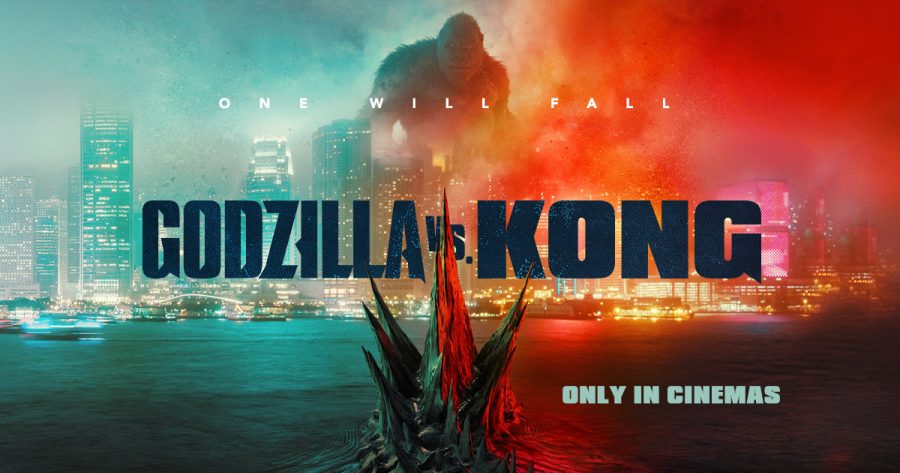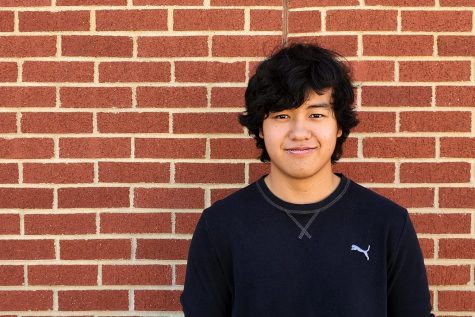Monster battles return with ‘Godzilla vs. Kong’
TRL’s Ryan Wang says that the film, “delivers on what is anticipated, exceeds what was promised, and features one of the most ambitious gladiator-style fight scenes of the past decade.”
April 1, 2021
Ever since “Kong: Skull Island” was released in 2017, audiences have been craving for more monster against monster battles, which pits large beasts of all shapes and sizes against other beasts of similar nature, resulting in long-winded epic battles that ensure total chaos and destruction to everything around them. It’s sci-fi action at its best. Supporters of Kong were then introduced in 2019, to perhaps one of the most iconic monsters in both comics and film: “Godzilla: King of the Monsters.” However, what many fans didn’t realize at the time, was that these two creatures exist in the same universe, and that an ultimate showdown between the two was inevitable. In what could be the best studio film of this year so far, “Godzilla vs. Kong,” delivers on what is anticipated, exceeds what was promised, and features one of the most ambitious gladiator-style fight scenes of the past decade.
Directed by Adam Wingard, who is best known for his horror films, the film continues to unravel the plot of how monsters like Kong and Godzilla came to existence on Earth. While much of the beginning of the film seemed to drag on with seemingly unneeded details and too much insight into each character’s situation, it provides necessary information that helps better explain the history of the mammoth-sized monsters, better known as Kaijus. The various perspectives also help explain the nature of Kaijus, and how they’re not solely beasts of destruction, but also creatures who resort to their native territorial instincts. While it may seem like the characters are explaining the psyche of Kong and Godzilla, it’s clear that it is a criticism on how society has been treating the Earth over the past century, from increasing pollution, strip mining, nuclear testing, and other actions that harm the environment. While it’s a deviation from what this film is truly about, it provides a clear message and real-life implications that seem to still resonate after the film itself is over. It’s almost too much information and meaning to pack into a small period of time, but Wingard and the writers have managed to do so with finesse, while not being overly explicit or breaking the 4th wall.
What Wingard doesn’t manage to accomplish, however, is any sort of suspense or mystery in this film, something that seems to be synonymous with most action movies nowadays. There is heavy foreshadowing, and audiences are almost able to predict everything that unfolds during the climax. While the film name, poster, and trailers already overtly state that a fight between Kong and Godzilla was going to occur, it feels like the characters in the film know that it’s going to happen as well. It’s as if they’ve glimpsed into the future and foresaw the albeit epic showdown, and are unable to hide their predictability anyways. While the visuals make up for the fairly elementary writing, most unexpected twists and a more complex plot is what this film direly needs.
While the characters individually are unable to mask the knowledge of the final battle, their relationships with one another allow various personalities to be fully displayed, offering humor, heart, and hurt within each scene. Much of the cast from the original Godzilla movie returned in this film, each one possessing a unique outlook on the situation. There’s Madison Russell (Millie Bobby Brown), whose bravery and courage acts as a beacon of hope to the other characters. Bernie Hayes (Brian Tyree Henry) debuts as a paranoid podcaster whose fear and curiosity define his role in the entire saga. Josh Valentine (Julian Dennison) quickly becomes a fan favorite as he overcomes his own anxiety with humor. And the additional characters, such as Nathan Lind (Alexander Skarsgård), Ilene Andrews (Rebecca Hall), and Ren Serizawa (Shun Oguri), each embody a different purpose that ultimately drives their own character arc. While a large cast of characters tackled this film, each character seemed relatable, and each performance filled a specific role that made this film feel complete.




